Sometimes the enemy of good isn’t evil. Sometimes the enemy of good is perfect. This may be the case on Buffalo Creek, a wild trout stream that runs through the Absaroka-Beartooth Wilderness of southern Montana before crossing into Yellowstone National Park. Buffalo Creek is a tributary of Slough Creek and, eventually, the Lamar River. It’s also been identified as the source of the non-native rainbow trout that have persistently been showing up in both Slough Creek and the Lamar. The invasive trout were first planted in Buffalo Creek in 1935, according to Montana Fish, Wildlife and Parks.
Slough Creek is one of the last great trophy Yellowstone cutthroat streams in the fish’s native range, and the Lamar is the largest tributary to enter the lower Yellowstone River inside the national park. Over the last decade or so, rainbows have been turning up in both the creek and the river.
That’s problematic. Rainbow trout and cutthroat trout can mingle on the redds during the spring spawning season, and the resulting offspring is a fertile hybrid often called a “cuttbow.” Over time, the rainbows and the hybrids chip away at native cutthroat trout genetics, until they’re gone altogether.
To combat the ongoing invasion of the rainbows, the U.S. Forest Service and MFWP want to remove the non-native fish from Buffalo Creek from its confluence with Slough Creek upstream some 46 miles to Hidden Lake. The method of non-native trout removal — poisoning the watershed a chunk at a time with a piscicide like rotenone — has proven effective for decades.
In the proposed plan, not only would the removal of rainbows halt the invasion of the non-native trout in Slough Creek and the Lamar River, the proceeding relocation of Yellowstone cutthroat trout would give the fish miles and miles of new coldwater habitat. One of the reasons the two agencies want to pull this project off is because native fish in the West aren’t gaining habitat, and they’re particularly not gaining habitat that can serve as climate refugia in a rapidly warming world.
Good, but not perfect
Generally speaking, it’s a good plan. But, if you ask the non-profit group Wilderness Watch, it’s deeply flawed and hardly perfect. Earlier this month, the group filed a lawsuit in opposition of the plan, noting that the removal process involves a poison that not only kills fish, but also kills aquatic insects, amphibians — anything that breathes with gills.
Additionally, the group says in its complaint, the removal effort would involve “a decade’s worth of helicopter landings plus the use of other motorized equipment” to get the job done.
Finally, Wilderness Watch opposes the plan because, above a series of waterfalls on Buffalo Creek that serve as a fish migration barrier just north of the national park boundary, the creek, before it was stocked with rainbows in 1935, was historically fishless.
“Our lawsuit challenges (USFS/MFWP) managers’ plans to continue intensively engineering the aquatic ecosystem through poisons and the exchange of one non-native stocked fish species for another,” a statement found on the group’s website reads. “We assert in its complaint that both the ends and the means of the Forest Service’s project violate the provisions of the Wilderness Act, which provides protection to this area.”
Some perspective
Yellowstone cutthroat trout might be the signature native fish of the interior West. This is the fish that, until invasive lake trout were found in Yellowstone Lake some 30 years ago, was among the healthiest of the West’s native trout. Yellowstone cutts still had healthy and intact big-water habitat with access to abundant cold-water spawning streams. And they were delivering a world-class experience to recreational anglers who traveled to Yellowstone National Park from all over the world for the chance to catch one.
But, when those invasive lake trout were discovered in the early 1990s, the writing was on the wall. By 2010, the predatorial char had eaten their way through the bulk of the lake’s native fish — some 99 percent of the lake’s spawning Yellowstone cutthroat trout were gone.
Thankfully, thanks to millions of dollars and thousands upon thousands of hours of thankless work spent netting lake trout from Yellowstone Lake, the National Park Service has been able to bring the lake’s native fish back from the brink of a very dark fate. The work isn’t done — and very likely never will be. Yellowstone Lake will always be home to lake trout, and that means the Park Service will always be in the lake-trout removal business.
Even with a functionally healthy Yellowstone Lake, Yellowstone cutthroat trout today occupy only 10 percent of their historic range. Countless examples exist today that highlight the thoughtlessness exhibited toward native trout as the West was gentrified. Non-native fish were rampantly stocked over native trout. Mine tailings were allowed to leach into trout streams. Agricultural development turned trout streams into irrigation straight-pipes. Rivers were chronically overfished. Today, rapidly warming water associated with global climate change is providing one more knock on the head to one of our most-treasured native trout.
Frankly, we’re lucky the fish exist at all.
What’s perfect in an imperfect world?
Wilderness Watch is absolutely right. If the plans put in place by the Forest Service and MFWP come to fruition, non-native Yellowstone cutthroat trout will swim the waters of Buffalo Creek above a naturally occurring migration barrier. That barrier, before the rainbows were unceremoniously dumped into the creek almost a century ago, kept Buffalo Creek devoid of fish.
But what of the intent of the plan? Is it imperfect to actively seek out appropriate habitat for a species that is missing from 90 percent of its historic habitat? Is it really worth a district court lawsuit to fight a plan to improve the standing of a fish native to the region, but non native to 46 miles of small-water habitat?
And … honest question, here: do we have time to nit-pick the Wilderness Act and determine the short-term impact from the use of pisccides and helicopters when, according to biological forecasts, we stand to lose half of the livable habitat for wild trout over the next half century?
“This project is an essential piece in Yellowstone cutthroat trout conservation work,” said Mike Thom, Gardiner district ranger for the Forest Service when the project was first announced in April 2022. “The Custer Gallatin National Forest and specifically portions of the Absaroka Beartooth Wilderness is poised to create secure cold water refugia and strongholds for the long-term sustainability and success of Yellowstone cutthroat trout. This is one of those prime opportunities working jointly with Montana Fish, Wildlife & Parks to benefit the natural characteristics of wilderness with native fish communities critical to our ecosystem.”
Note the inclusion of the term “cold water refugia.”
Let a good idea be good, even if it’s not perfect
One of the most troubling aspects of the environmental movement among average Americans is the perception that those who practice environmentalism are absolutists. While there are myriad examples disproving that perception, all it really takes is one example where a well-meaning non-profit can offer enough fodder for the “See? I told you so” crowd.
No, Buffalo Creek is not historically a Yellowstone cutthroat trout stronghold. But for the better part of a century, it’s been home to an introduced population of rainbow trout, which aren’t native either.
The plan to remove the exotic rainbows from Buffalo Creek should be celebrated. The plan to replace them with significantly less exotic Yellowstone cutthroat trout is a good one and Wilderness Watch should pay its attorneys to tackle more important issues facing wild country in the West.
No, it’s not a perfect plan. But it’s pretty damned good.




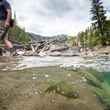
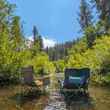
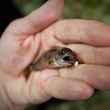



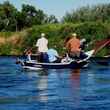



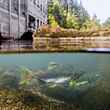
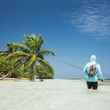



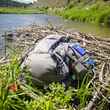




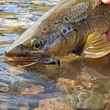
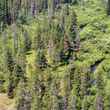





Comments
Matthew Koehler replied on Permalink
If people would like to learn more about this lawsuit and the issues at hand, especially as they pertain to Wilderness and the Wilderness Act, please visit the following resource page.
https://www.wildernesswatch.org/poison-has-no-place-in-the-absaroka-bear...
One item of particular interest at the resource page may be this very detailed FAQ we put together.
https://www.wildernesswatch.org/images/wild-issues/2023/Buffalo-Creek-La...
Kevin Gregory replied on Permalink
Well written - and informative of your groups position. However you need to spend less money on lawyers than write well and more on ones that have a solid foundation of logic. If you argument was we should eradicate the rainbows and leave the creek “fishless” it would be a waste of an great opportunity to preserve nature in the face of range loss but it would at least make sense
But saying we should do nothing because it will impact the natural environment ignores that man already has done that and it will get worse by leaving the rainbows as they overtake the native cutthroat
So while I appreciate the effort to protect nature - your stance is wrong in this situation and there are dozens of other places to focus your efforts and dollars
Bill Horn replied on Permalink
Worshipping at the shrine of the 1964 Wilderness Act. It has been misused for years to thwart a variety of fish and wildlife projects. Similar attitudes have led groups to block invasive sea lamprey control in the Great Lakes. Just another burden to be carried by fish and wildlife oriented conservationists.
Philip replied on Permalink
The nonnative rainbow trout are as intrusive, or moreso to the area, than the helicopters would be. The helicopters and piscicides are temporary. The rainbow trout are permanent. The only difference is that the rainbow trout are out of sight, while the helicopters would be visible for their few trips. So Wilderness Watch is okay with a permanent anthropogenic disturbance to the ecosystem but not fine with a temporary disturbance? Strange.
From Wilderness Watch's FAQ; "The Absaroka-Beartooth Wilderness was designated to be protected as a place where the human hand does not shape the landscape and its ecosystems—where nature reigns supreme and species and habitats live and develop of their own will."
Great, except the presence of rainbow trout is due to "human hands." So, it's already not a natural ecosystem. It's already been altered by man. The Forest Service & MFW&P would be returning the Absaroka-Beartooth Wilderness to a more natural state, albeit with a temporary "disruption" to the "wildness" of the place.
This is taking the intent of the Wilderness Act too far. It does bring up an interesting dilemma, though. What takes priority? Species security or hardline adherence to statutes?
I'd also question the "fishless" claim. It may have been fishless in recent times, but we're certain there are no fossils in the fishless section that might indicate that at some point in the earth's history fish did live there before some catastrophic event caused their demise? I know there are truly fishless places on earth, but this one would surprise me if through a more thorough investigation it was determined to be fishless since before the Pliocene. If we're going to split hairs, might as well move the goalposts on the timeline for the stream being fishless while we're at it.
I agree with the author here. Is this really the best use of money and attorney time? There's nothing better to do than throw wrenches in the spokes of attempts to protect imperiled species?
David replied on Permalink
As an avid fisherman and retired biologist I recognize that I often view my use of the outdoors through my personal pursuits and interests. However, introduction of Eastern brook trout (in particular), rainbow, brown and even cutthroat trout throughout the west has had devastating consequences on our native amphibian fauna. While recognizing the importance of coldwater refugia for native trout you should also recognize the need for coldwater and trout free refugia for many of our native amphibian species. I do not know if this is the case in this specific situation but this will likely be an issue across the west with climate change so I suggest we all keep in mind the ecosystems we care about are much bigger than just trout.
Richard loftus replied on Permalink
I have fished Slough Creek from the road to above the second meadow and it is a gem loaded with numerous Cuts and it would be a shame to adulterate those fish here and in the Lamar. Eliminating non-natives to expand the range of natives and protect them from hybridization is the correct decision.
Anonymous replied on Permalink
Wilderness protected areas are the most perfect places on the planet and should not be changed and protected at all costs, there is no amount of money for that! STAY WILD!
Kerry replied on Permalink
Yeah, in the interest of purity, we should really return waters found to be fishless a thousand years ago to their “original” (hahaha) state and kill all the fish in them. Or, just leave invasives in them because we don’t want to make any noise. Meanwhile, let’s just let the indigenous species we’re murdering by habitat destruction go extinct, and not try to preserve them in sustainable places that might protect their genetic heritage. Good call, Wilderness Idiots.
Ted Williams replied on Permalink
Thanks for this excellent piece.
There is no enemy of native fish more dangerous than Wilderness Watch. All across the West it blocks and delays use of rotenone -- in almost all cases the only tools available for saving native fish from extirpation or extinction.
Log onto the website of WW, and you’ll encounter a rendering of a grizzly. Icons of wilderness like grizzlies count for WW, but not icons of wilderness like Yellowstone cutthroat trout. They’re cold, slimy, featherless, furless, and unseen by WW are routinely issued.
And Buffalo Creek was almost certainly not naturally “fishless” in recent geologic history. “To say fish were never there is a pretty arrogant statement. Did they walk the earth with woolly mammoths?” remarks Lolo National Forest district ranger, Quinn Carver.
“When it comes to rainbow-trout mitigation, the Buffalo Creek project is the biggest and most needed we have,” says Dr. Todd Koel, who leads the park's native fish conservation program. “In spring the big migratory cutthroats move from the lower Lamar Valley up into the headwaters in the remote backcountry to spawn. Then in summer and winter they return to the lower river. Hybrids and rainbows do the opposite; they’re mostly concentrated downstream in the Lamar Canyon and lower river. So for now we have this separation. But if we were to let everything go, we’d lose the entire Lamar system and end up with what’s happened in many other large river systems around here -- just big hybrid swarms.”
“The narrative [of WW and allies] is rife with falsehoods,” declares Montana’s recently retired Yellowstone cutthroat biologist Carol Endicott, citing among other WW’s claim that “hundreds of gallons of rotenone” will be used to treat Buffalo Creek. “All rotenone-based piscicides currently available have a concentration of five percent rotenone,” she says. “So the amount of actual rotenone for two treatments of 47 stream miles and Hidden Lake is 4.2 gallons. [WW] is accusing us of trying for a recreational fishery, as if that would be bad. Buffalo Creek, currently teeming with rainbows and hybrids, is barely fished as it is. Our crews have been up there a lot and have never seen an angler. You have to hike ten miles through grizzly country to reach it, and it’s not a day trip.”
Allying itself with WW and other opponents of this and other genetic and thermal refuges is the Native Fish Coalition. Throughout the spring of 2022 I pled with CEO Bob Mallard to talk with Koel and Endicott before publishing a FAQ which now reads: “We…do not support introducing [trout] to previously troutless, or fishless waters.” He declined. Had he complied, he’d have learned that the Buffalo Creek project is part of an MOU with the U.S. Fish and Wildlife Service and other agencies to keep Yellowstone cutts off the Endangered Species List and that the creek almost certainly sustained Yellowstone cutts in recent geologic time.
“I cannot imagine the hubris of publishing something without speaking to the biologists leading the project,” remarks Endicott. “That is incredibly irresponsible. They’re free to make their own operational definition of ‘historically fishless,’ but their definition is at odds with our legal responsibility. It ignores the concept of metapopulation dynamics where waters open and become blocked over time. I know of beaver dams that have blocked fish movement for hundreds of years. Then they go away and fish move in. Same with waterfalls, especially those sitting in the world’s largest super volcano. Under policy required by law, historically fishless waters are within the historic range, and we can legally put fish in them if they don’t harm other species. They coevolved with everything up there. The current barriers that block fish don’t block invertebrates and amphibians. They easily fly, drift or hop past these features. No harm, only benefit.”
The Native Fish Coalition’s FAQ left me no choice but to resign as National Chair in June 2022, a painful decision because I co-founded the outfit in 2017 and was far and away its major fundraiser.
Tim Driscoll replied on Permalink
Follow the money trail also….
Many of these frivolous lawsuits are made possible by the US Taxpayer….
Yep, they can file suit, then use the EAJA Statute, (Equal Access to Justice Act) to get their Attorney's paid with little to no costs to themselves
Jack Donachy replied on Permalink
Rainbow Trout are already established in Slough Creek and the Lamar River. Correct? If so, the proposed USFS and MFWP project is jousting at windmills.
I am very skeptical anytime it is proposed that we begin disrupting habitat in order to save habitat, and that poisons, helicopters, dynamite (which some TU chapters employ to remove beaver dams !?!) and various technological answers will set things right. We've been told all the decades of my life (and probably long before that) that God Technology will provide answers for the destruction an overpopulation of humans is causing. Still waiting.
So, leave Buffalo Creek alone. Maybe in the short term, some anglers don't see that as the "perfect" solution. But trust Nature and give her time to sort it out. That should be good enough for now. And in the long term, it may in retrospect prove to have been the perfect approach. And once again, Rainbow Trout are already in Lamar Creek. Correct?JD
Pages